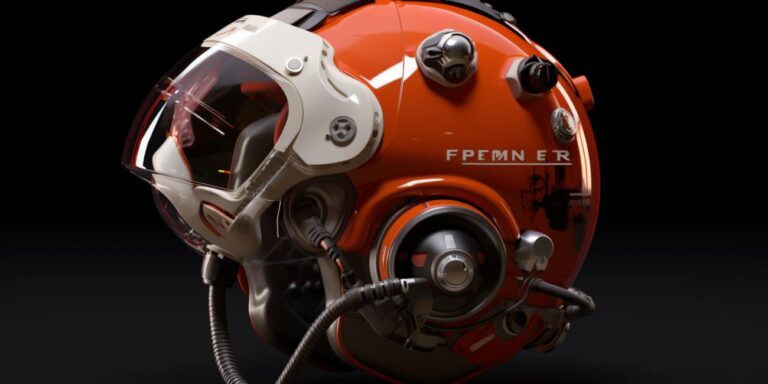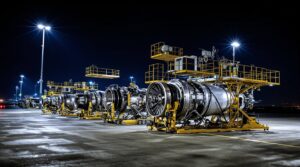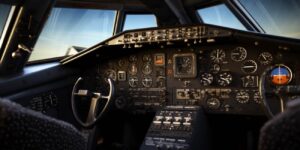The F-22 Raptor, a marvel in modern aviation, stands out as one of the aircraft capable of achieving remarkably high g-forces. With its advanced flight control system and aerodynamic design, the F-22 can pull maneuvers that exert intense gravitational forces on both the aircraft and its pilot. This fifth-generation fighter jet boasts a maximum sustained g-load of around 9.0g, showcasing its exceptional agility and performance capabilities.
Another contender in the race for extreme g-forces is the Sukhoi Su-35, a Russian heavyweight in the skies. Renowned for its impressive maneuverability, the Su-35 can execute maneuvers pulling 9.5g and even higher, subjecting its airframe to intense stress. The aircraft’s powerful engines and advanced avionics contribute to its ability to perform extreme aerobatics.
Not to be outdone, the Lockheed Martin F-16 Fighting Falcon has long been celebrated for its versatility and capability to pull high g-forces. While not reaching the peaks of the F-22 or Su-35, the F-16 remains a formidable force, pulling 9.0g in certain scenarios. Its compact size and nimble design contribute to its ability to withstand and maneuver through extreme gravitational forces.
When discussing g-forces, it’s crucial to mention the pilots who endure these intense conditions. Human tolerance to g-forces varies, and fighter pilots undergo rigorous training to withstand the strains imposed on their bodies. Specialized anti-g suits and training regimes help mitigate the effects of high g-loads, ensuring that pilots can maintain control and make critical decisions during intense aerial engagements.
While these aircraft showcase remarkable g-force capabilities, it’s important to note that the pursuit of even greater tolerances continues. Advancements in materials, propulsion systems, and flight control technologies may lead to the development of future aircraft that can push the boundaries of g-force endurance even further.
How fighter jets withstand high g-forces and speeds
Fighter jets, marvels of engineering and speed, endure extreme conditions as they soar through the skies. The ability of these aircraft to withstand high g-forces and speeds is a testament to the intricate design and cutting-edge technology employed in their construction.
One of the key elements enabling fighter jets to handle high g-forces is their robust airframe. Constructed with lightweight yet durable materials such as titanium and composite alloys, these airframes are designed to maintain structural integrity under immense pressure. The use of advanced composite materials allows for a balance between strength and weight, ensuring that the aircraft remains agile without compromising its resilience.
Moreover, fighter jets employ sophisticated flight control systems that play a crucial role in managing the aircraft’s response to g-forces. These systems use a combination of hydraulics and computerized controls to adjust control surfaces rapidly. This adaptability allows the aircraft to maintain stability and control, even when subjected to rapid and forceful maneuvers.
The cockpit of a fighter jet is another critical component designed to safeguard the pilot during high-speed and high-g situations. Advanced ejection seats, equipped with rocket motors, provide a rapid and safe means of escape in emergencies. The seats are meticulously engineered to handle the intense acceleration forces experienced during ejection, ensuring the pilot’s survival in extreme circumstances.
Jet engines, the powerhouse of these formidable machines, are equipped with cutting-edge technology to propel the aircraft at blistering speeds. Turbofan and afterburner systems enhance thrust, enabling the fighter jet to achieve and sustain high velocities. The afterburner specifically injects additional fuel into the exhaust stream, producing a significant increase in thrust, crucial for reaching supersonic speeds.
Furthermore, the aerodynamics of fighter jets are meticulously designed to optimize performance under various conditions. Sleek and streamlined shapes reduce drag, allowing the aircraft to cut through the air with minimal resistance. Wing configurations, such as variable-sweep wings, enhance agility, enabling the aircraft to swiftly adapt to different flight regimes and combat scenarios.
Modern fighter jets are also equipped with fly-by-wire systems, which replace traditional manual controls with electronic interfaces. These systems interpret the pilot’s input and make real-time adjustments to control surfaces, enhancing the aircraft’s responsiveness and maneuverability. The integration of artificial intelligence further augments the aircraft’s capabilities, allowing for quicker decision-making in dynamic and high-stakes situations.
Training pilots to withstand high g-forces safely
Pilots undergo rigorous training to prepare for the challenges of high g-forces experienced during maneuvers. This specialized training is crucial to ensure that pilots can withstand extreme gravitational forces without compromising their health or performance. The primary focus of such training is to enhance the pilot’s ability to manage and endure the physical stress induced by rapid acceleration.
A key component of high-g training involves the use of g-suits. These sophisticated garments, officially known as anti-g trousers, play a vital role in protecting pilots from the effects of gravitational forces. The g-suit is designed to counteract the pooling of blood in the lower extremities, preventing loss of consciousness and ensuring that the pilot remains alert and in control during high-g situations.
The training regimen typically begins with classroom instruction, where pilots learn about the physiological effects of g-forces and the proper techniques to manage them. Understanding the importance of the g-suit in this context is a fundamental aspect of the educational process. Pilots are educated on the mechanics of how g-suits operate and their role in preventing G-LOC (G-induced Loss Of Consciousness).
Practical training sessions are conducted in centrifuge machines, simulating the gravitational forces experienced during flight maneuvers. These machines expose pilots to increased g-forces, allowing them to acclimate and develop the necessary techniques to resist the physiological effects. Pilots wear g-suits during these sessions to experience real-life scenarios and ensure they can effectively utilize the garment under extreme conditions.
The importance of physical fitness cannot be overstated in training pilots to withstand high g-forces. A strong cardiovascular system and muscular endurance are essential for pilots to endure the intense physical demands of high-g maneuvers. Training programs often include aerobic and strength exercises tailored to enhance the pilot’s overall physical condition.
Training in a high-performance aircraft is the culmination of the entire training process. Pilots apply the knowledge gained in the classroom and the experience acquired in the centrifuge to real-world situations. The integration of the g-suit into flight scenarios ensures that pilots can effectively manage high-g forces during dynamic aerial maneuvers.
Aerobatic stunt planes withstanding negative and positive g’s
Aerobatic stunt planes are marvels of engineering and design, pushing the boundaries of what conventional aircraft can achieve. These extraordinary machines are built to endure extreme conditions, including the formidable forces of negative g and positive g.
When we delve into the realm of aerobatics, the term stunt takes on a whole new dimension. These planes are not just means of transportation; they are airborne performers, executing breathtaking maneuvers that defy the laws of physics. In the world of aerobatics, gravity becomes a partner in the intricate dance of twists, turns, and loops.
One of the most captivating aspects of aerobatic flying is the ability of these planes to withstand both negative g and positive g. Negative g refers to the force that acts opposite to gravity, pulling objects away from the Earth. In aerobatics, this force comes into play during maneuvers where the aircraft points its nose skyward, causing occupants to experience a sensation of weightlessness.
Picture a moment of weightlessness, where the pilot and any daring passengers float effortlessly within the cabin. This is the result of the aircraft overcoming gravity, and it’s a defining feature of aerobatic stunt flying. However, the euphoria of negative g is paired with the demands it places on the aircraft’s structure.
Aerobatic planes are constructed with reinforced frames and robust materials to endure the stresses of stunt flying, especially when experiencing negative g. The structural integrity of these planes is meticulously designed to ensure that the aircraft remains stable and safe, even when inverted or in freefall.
On the flip side, positive g is the force that acts in the direction of gravity, pushing objects toward the Earth. This force becomes prominent during aerobatic maneuvers that involve diving or sharp turns. While negative g provides a sensation of weightlessness, positive g exerts additional force on both the aircraft and its occupants.
The impact of positive g on the human body is substantial, leading to increased blood pressure and a sense of heaviness. Aerobatic pilots are well-trained to manage and endure these forces, ensuring that their bodies can withstand the demands of extreme stunt maneuvers.
Imagine the ballet of an aerobatic stunt plane, gracefully navigating the skies, challenging the boundaries of physics with every twist and turn. The combination of engineering excellence and pilot skill allows these aircraft to perform feats that seem to defy the laws of nature. In the world of aerobatics, where negative g and positive g are the choreographers, stunt planes emerge as the stars of an awe-inspiring aerial spectacle.






